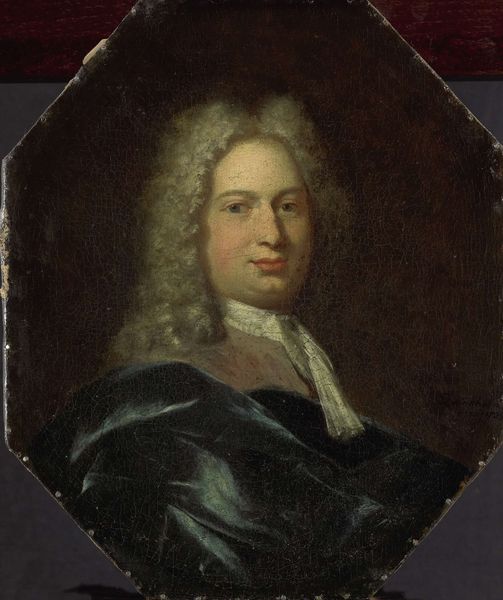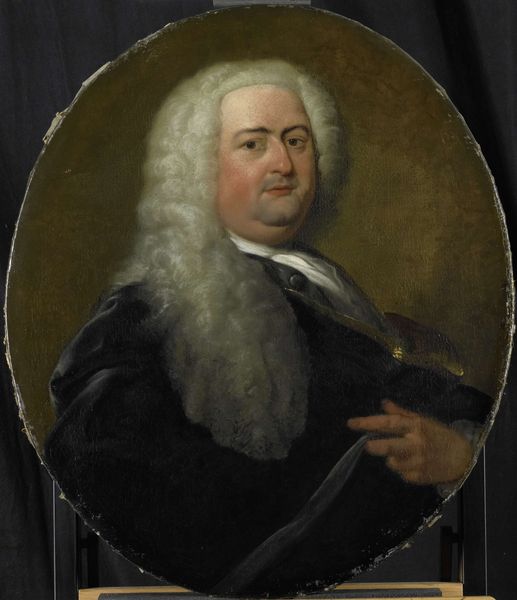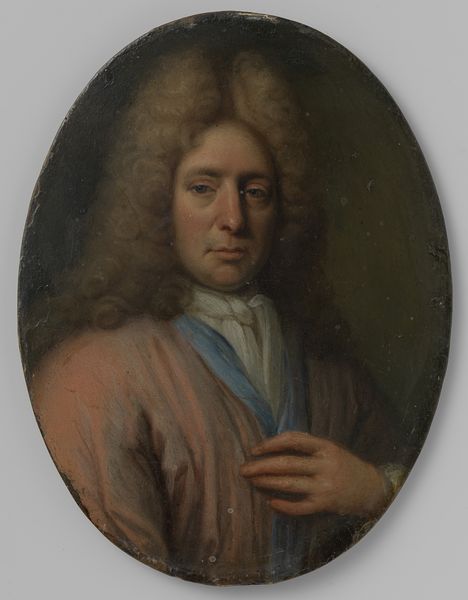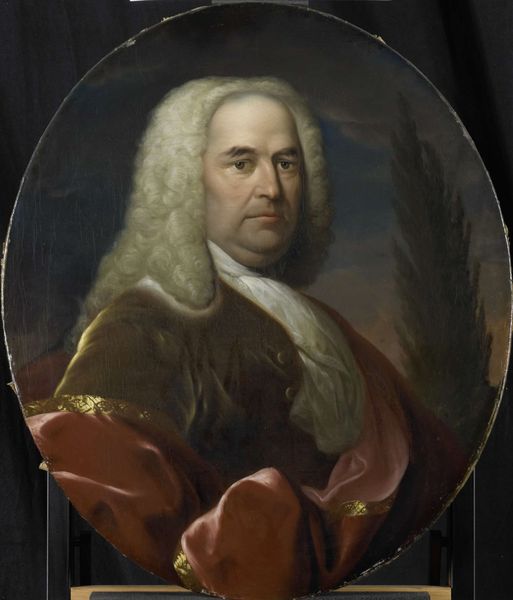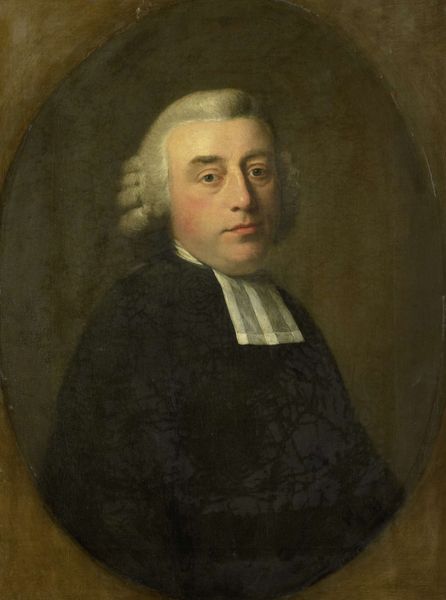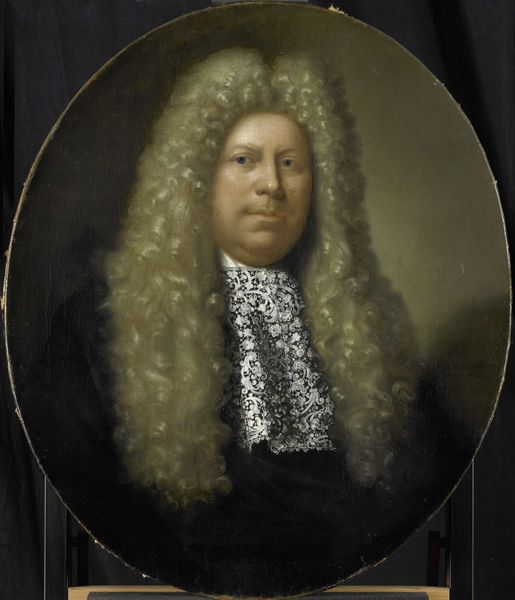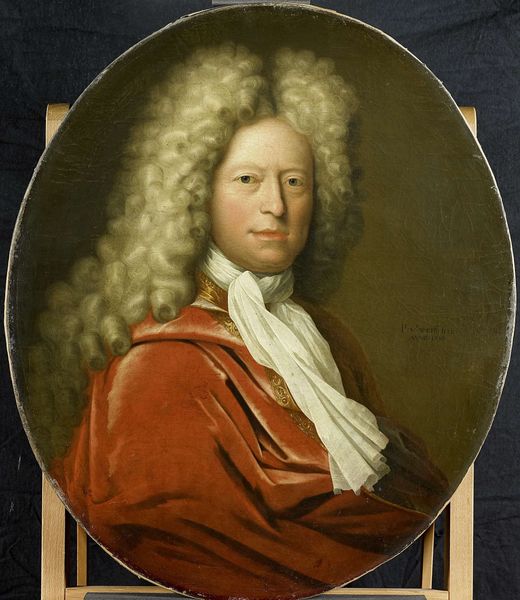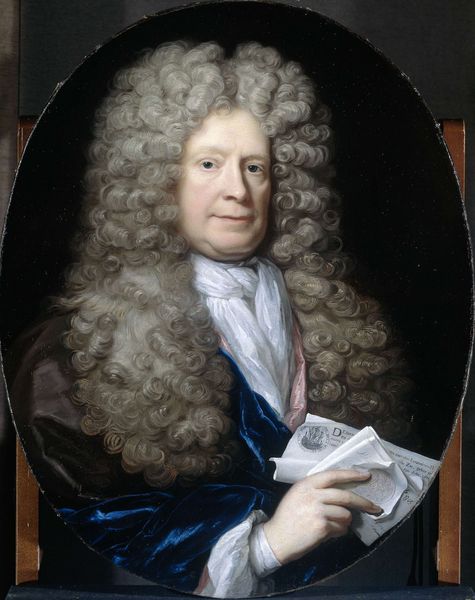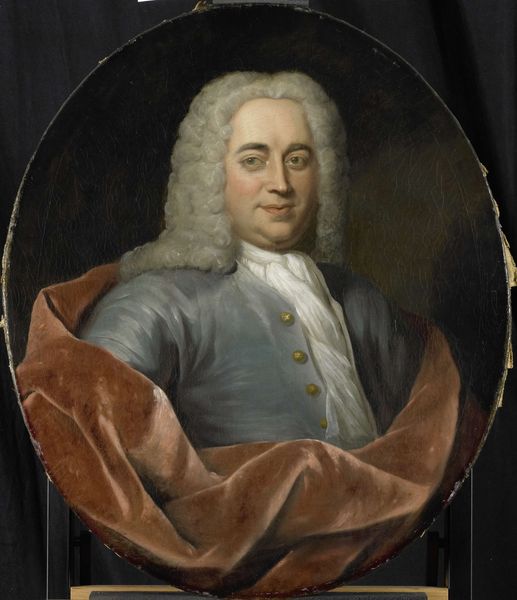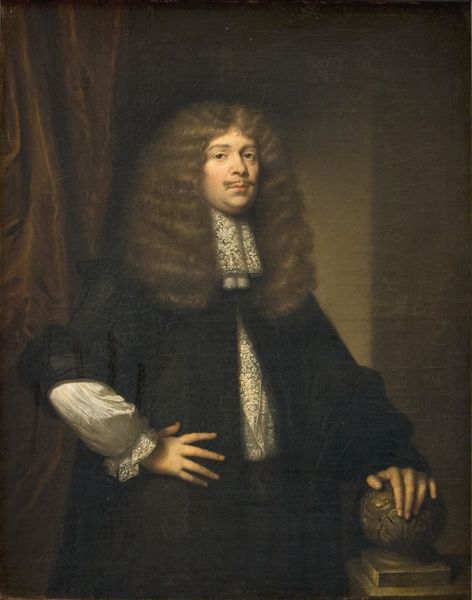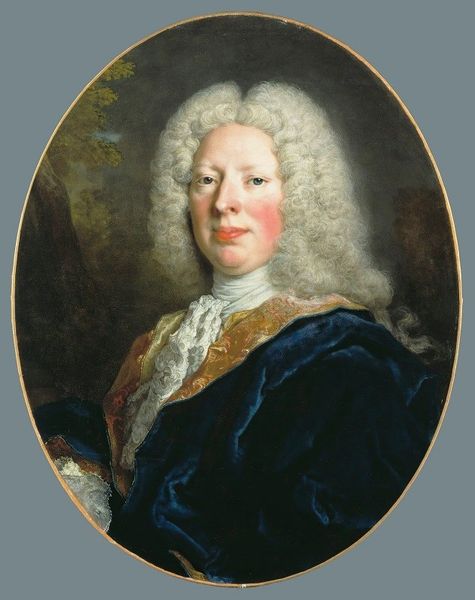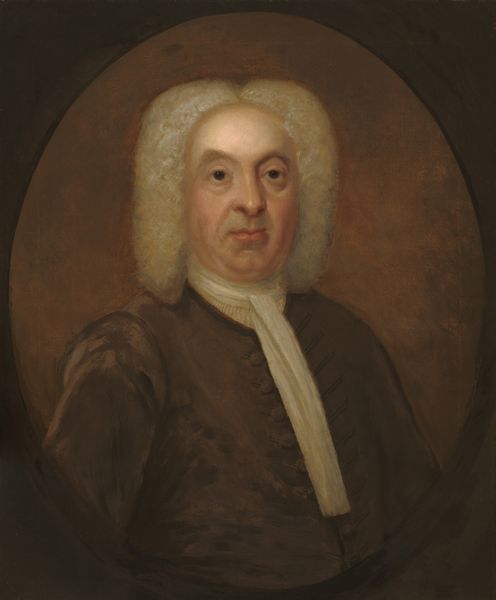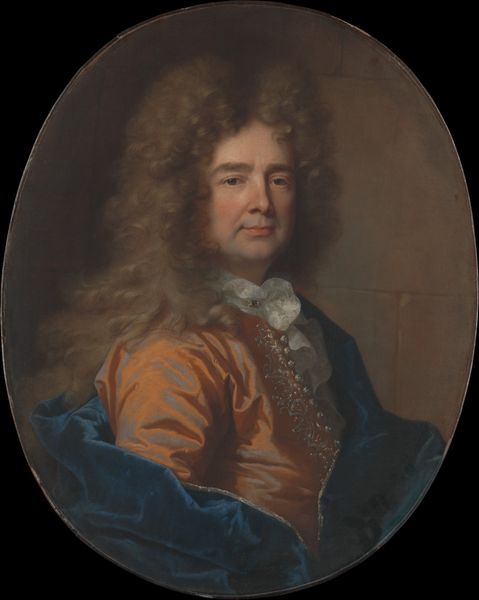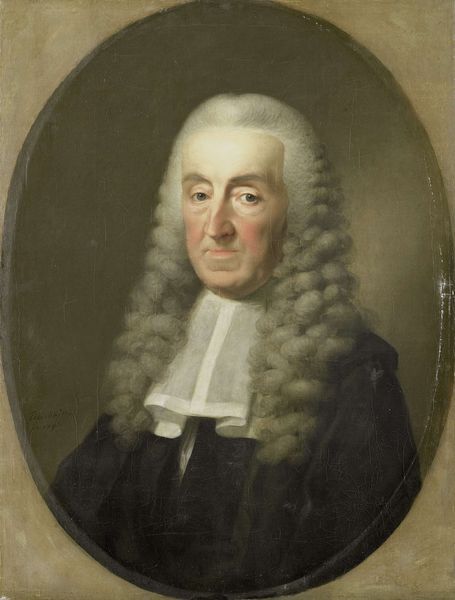
Portrait of Johan Arnold Zoutman, Husband of Anna Margaretha van Petcum c. 1725
0:00
0:00
anonymous
Rijksmuseum
painting, oil-paint
#
portrait
#
baroque
#
portrait
#
painting
#
oil-paint
#
male portrait
#
realism
Dimensions: height 72 cm, width 59.5 cm, depth 4 cm, height 80.6 cm, width 68.1 cm, depth 9.8 cm
Copyright: Rijks Museum: Open Domain
Editor: This is an arresting portrait of Johan Arnold Zoutman, painted around 1725. The oil paint on canvas is so striking; you can almost feel the weight and texture of that enormous wig. How do you interpret this work? Curator: It's compelling to consider the wig, isn’t it? It represents so much more than just fashion. Think of the labor involved: cultivating the hair, the craft of the wigmaker, the industry supporting it all. And of course the raw materials. The portrait is ostensibly of an individual, but what does it actually reveal? Editor: I see what you mean. It's easy to focus on the face, but the wig signifies a whole economic system! So the painter wasn’t just portraying a man but also class? Curator: Exactly! This portrait functions as a carefully constructed presentation of status. The materials announce his position. But let’s think further. How were the paints produced? What was the canvas made of? Who benefits from this commission, the sitter, or the artist? And whose labor underpinned it all? Editor: The sheer quantity of materials involved—the canvas, the pigment, even the sitter's clothing—represents wealth that someone produced! Is that also relevant here, beyond the individual? Curator: Absolutely! We should acknowledge how those raw materials get transformed and used. Think of the colonial ties to material extraction and how that all enabled this depiction of luxury! What is the true "subject" of the portrait: the individual or their access to exploitative resources? Editor: That shifts my understanding considerably. It's a potent reminder to look beyond the immediate image and consider the bigger picture. I guess the craft of portraiture itself also participates to that economy. Curator: Precisely. By focusing on these elements, the portrait tells a more complex story. The image prompts us to investigate that era. Editor: Thanks! I didn't appreciate the value of zooming out and investigating an artwork through its raw components, labour involved, and place within consumerist structure.
Comments
No comments
Be the first to comment and join the conversation on the ultimate creative platform.
